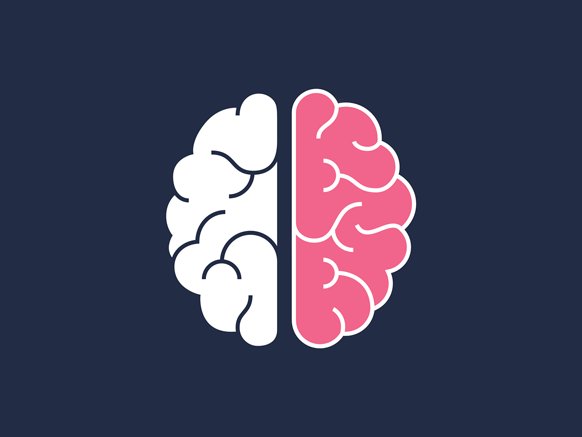This January, a video game chip started a scientific reckoning. It all began when some "microchip archaeologists" photographed the chip---the MOS 6502 microprocessor that lived inside Atari---and built a digital model of its interconnections. Then some neuroscientists put it to the test. One by one, they knocked out the transistors in their map, trying to get at what the circuit was for. It's similar to what neuroscientists do when they lesion a part of the brain, or silence single neurons. Their project was simple: Could they use the arsenal of neuroscience methods to get at the function of a simple circuit?
They failed. Miserably. The scientists' experiments didn't produce much information about Donkey Kong, Space Invaders, or Pitfall---just which transistors you could knock out and turn the game off. The result was damning for researchers pursuing the connectome, a bottom-up recreation of all the brain's interconnections. To the neuroscience community, the message was clear: Brain scientists may have plenty of bottom-up data about the brain, but they're far from using that data to understand how the organ works. "For all of these approaches, we haven't really thought through how to ultimately get at an understanding of the brain based on the data we're getting," says Konrad Kording, a neuroscientist at Northwestern and one of the study's authors.
But even Kording thinks there’s hope for the future of the connectome. It just isn’t quite what people think.
To get a connectome, neuroscientists bounce beams of electrons off of neural tissue, creating nanoscale images of cell membranes and organelles---in some cases, even little bubbles of neurotransmitters. Then they can trace the long, thin axons and dendrites, ultimately building a map of all their interconnections.
And just having the map isn't enough. For the microprocessor example, "we know exactly how transistors behave, and we can simulate them," says Shawn Mikula, a neuroscientist at the Max Planck Institute for Neurobiology in Germany working toward a whole-brain connectome of the mouse. "But for the cellular connectome, we don't know the individual properties of neurons very well." Neurons have complex electrical properties, and synapses that can be active or silent. They can also release different neurotransmitters onto many different types of receptors. Neurons, Mikula says, “are worlds unto themselves.”
But even if they could collect the data about all of that variation---and both Mikula and Kording are skeptical---it’s a big jump from a simulation to understanding the brain. Kording says that if he could give a colleague a hard disc with the whole human connectome on it right now, they wouldn’t know what to do with it. “The shocking thing is that even the brightest people I know in neuroscience just say, ‘Well, someone's going to figure it out.’” Neuroscientists want to figure out how neurons influence each other, gaining a broader understanding of how the brain computes. But his microprocessor paper suggests that, at least with the tools neuroscientists have now, that wouldn’t be possible.
Mikula---along with many in the field---is less fatalistic. He actually uses the Atari microprocessor in his talks as an example of how bottom-up structure can be used to predict function. “Because in the paper that was exactly what they did,” Mikula says. “They had a circuit structure and they ran simulations on it to determine the function. The paper was actually proving the point of connectomics.” The "functions" were simple---on/off switches and clocks---but they still figured them out.
Just like Kording's experiments didn't get all the way to understanding the microprocessor, a connectome might not give you a perfect simulation of the brain. But it could simplify certain research problems in neuroscience. A neural map could constrain the problem of where a piece of information could go if, say, it came in to your brain through your eyes---letting researchers trace the path through the maze of the brain. In Mikula's view, the connectome is a tool for asking questions about the brain, rather than the answer to the question of how the brain works.
The connectome could also clear up one area of neuroscience that desperately needs some structure: neuroanatomy. Classically, neuroscientists have used traces of different chemicals to parcel the brain out into little modules, like the dopamine-rich substantia nigra, which works to provide rewards. That way of thinking works pretty well for some brain areas, Mikula says, but when you get to more complex processing regions “it starts to get a bit fuzzier.” The connectome could fundamentally change how scientists talk about the brain’s structure. “You can see whether it actually makes senses to talk about having discrete processing modules or discrete areas in the brain,” says Mikula.
To really tap the potential of the connectome-as-tool, though, neuroscientists will need to figure out how to build them faster. Comparing multiple connectomes could help explain disease pathology or between-species differences in brains---but right now, building just a single connectome is a huge endeavor. The most successful method involves imaging the top of a cube of brain, then slicing off a very thin layer with a diamond-tipped blade and imaging the next layer in the cube. The slices are destroyed in the process, so you only have one shot to get the images.
Mikula is one neuroscientist working to build connectomes faster. He's developing a “whole mouse brain on tape” with software that can randomly access different parts of the brain and image at different resolutions. Neuroscientists could target certain parts of the brain at lower resolution and target high-priority spots for high-res imaging later. Eventually, it might be possible to label different chemicals in the cells on the tape as well to get at the functional differences between different types of cells. Mikula may never get to a whole-brain simulation---but that won't stop him from trying.
